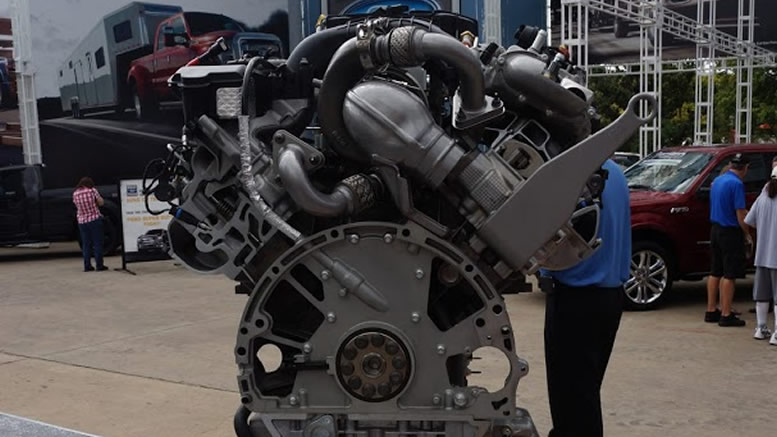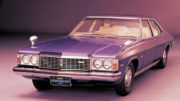
The diesel engine is a type of internal combustion engine that was invented by Rudolf Diesel in 1892. Diesel intended the engine to use a variety of fuels including coal dust. He demonstrated it in the 1900 World’s Fair using peanut oil. Diesel engines are know as compression ignition engines.
Diesel Engines don’t use spark plugs, the compression of the fuel in the engine is what ignites the fuel because when a gas is compressed, its temperature rises. Air is drawn into the cylinder of a diesel engine and compressed by the rising piston, at a much higher compression ratio than for a spark-ignition engine. At the top of the piston stroke, diesel fuel is injected into the combustion chamber at high pressure, through an atomising nozzle, mixing with the hot, high-pressure air. The resulting mixture ignites and burns very rapidly. This contained explosion causes the gas in the chamber to expand, driving the piston down with considerable force and creating power in a vertical direction. The connecting rod transmits this motion to the crankshaft which is forced to turn, delivering rotary power at the output end of the crankshaft. Scavenging (pushing the exhausted gas-charge out of the cylinder, and drawing in a fresh draught of air) of the engine is done either by ports or valves.
A vital component of any diesel engine system is the governor, which limits the speed of the engine by controlling the rate of fuel delivery.
In very cold weather, the compression itself is insufficient to heat the air enough to ignite the fuel. Glow plugs are electrical heaters inside the cylinder to help warm the air. Once the engine is started and warmed up, the glow plugs are no longer needed and may be turned off.
Diesel engines are more massive than gasoline/petrol engine of the same power because of the higher combustion pressures needed for ignition.
Diesel engines can produce black soot from their exhaust. This consists of unburnt carbon compounds. Other problems associated with the exhaust gases (high particulates, nitrogen oxide, sulfurous fumes) can be mitigated with further investment and equipment.
The addition of a turbocharger or supercharger to the engine greatly assists in increasing fuel economy and power output. The higher compression ratio allows a diesel engine to be more efficient than a comparable spark ignition engine, although the calorific value of the fuel is slightly lower at 45.3 megajoules/kilogram to gasoline at 45.8 megajoules/kilogram.
The lack of an electrical ignition system greatly improves the reliability. Unfortunately due to the greater compression force required and the increased weight of the stronger components, starting a diesel engine is a harder task. More torque is required to push the engine through compression. Either an electrical starter or an air start system are used to start the engine turning. On large engines pre-lubrication and slow turning of an engine as well as heating are required to minimise the possibility of damaging the engine during initial start-up and running. Some smaller military diesels are started with an explosive cartridge that provides the extra power required to get the machine turning.
Diesel fuel is a product of crude oil, although other oils can be burned inside an adapted engine. Good quality diesel fuel can be synthesised from vegetable fat and alcohol, these fuels are very clean with low emissions and are known as bio-diesel.
The manufacturers of diesel engines have improved them to a point where they are almost equal in performance to that of a normal Otto Cycle engine. As cleaner fuels become more popular and people begin to realise the advantages of the economical and reliable diesel cars, The diesel engine may be seen in more and more passenger cars.




